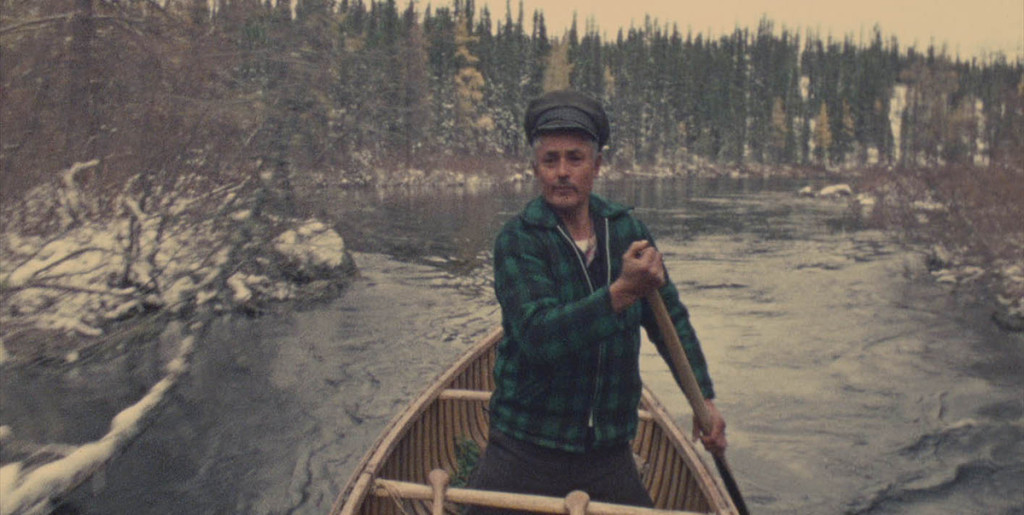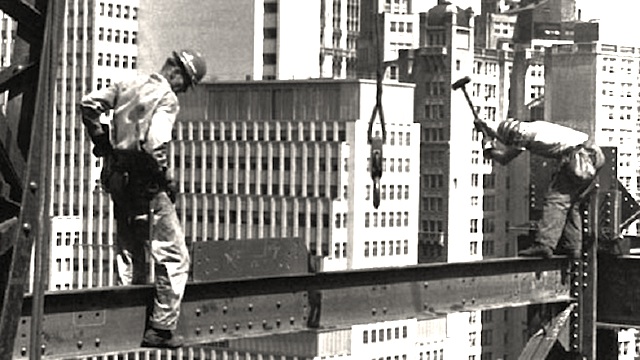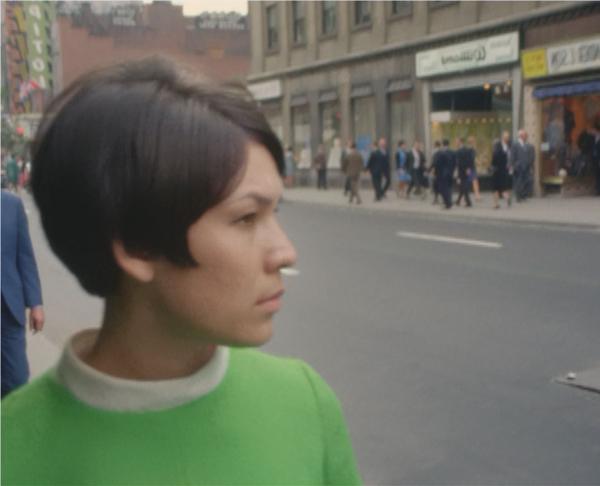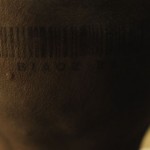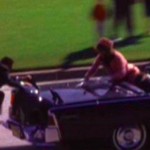Q&A: Caroline Monnet on NFB remix “MOBILIZE”
Created as part of a commission for the National Film Board of Canada, Montreal filmmaker Caroline Monnet’s Mobilize premiered at the Aboriginal Pavilion at the 2015 Pan Am Games in Toronto alongside the work of three other artists, whose work was collectively mounted as an installation called Souvenir. The four filmmakers – Monnet, Kent Monkman, Michelle Latimer and Jeff Barnaby (who we have previously interviewed HERE) – were approached by the NFB to create a three-minute film addressing Aboriginal identity and viagra online without a prescription representation by reworking material from the NFB archives.
Monnet’s Mobilize is a short but intense piece that celebrates the work ethic in both natural and urban environments, fueled by the urgent beat of Tanya Tagaq’s song “Uja.” With the film debuting as a standalone piece at this year’s Toronto International Film Festival, Spectacular Optical’s Kier-La Janisse and Clint Enns caught up with Monnet for a quick Q+A.
What were the parameters you were given for the project?
The idea was really to revamp their archives in a contemporary way, with new meaning and context. The producers had secured soundtracks by Tanya Tagaq and A Tribe Called Red and we purchasing cialis had to choose one song to complement the film. The turnaround in making the films was extremely short; I believe we got the call, submitted a concept, looked at the archives, picked footage and edited the piece all in about one month.
Where did the footage come from – was it all from one film, or several films? And in what ways (if any) did your reworking of the footage change the sentiment of the footage compared to how it was used originally?
I purposely did not choose footage from any specific film. I wanted images that could work well together and would fit my concept. I went with my instincts and began to naturally pick clips. In Mobilize, I used a lot of footage from films such as Cree Hunters of Mistassini (1974), César et son canot d’écorce/César’s Bark Canoe (1971) and High Steel (1965), among others. These films are recognizable because they were quite successful NFB titles. For my part, I deconstructed the films and placed them in a different context. I really focused on labor and the expression of specific skills. I think cultural expression remains cultural expression, but with Mobilize, we don’t necessarily focus on a specific character or narrative, we rather focus on the work at play, celebrating the amazing skills of these individuals. I juxtaposed a lot of footage of people building stuff and moving in a specific direction. The way I’ve reworked the footage makes it seem as if people are preparing for something, getting ready for something important coming, gathering to a place and mobilizing themselves.
I am hoping people will realize how lucky we are to have access to these archival images. It’s very valuable footage of indigenous expression that is still relevant today and could be used as a tool for education. Mobilize was made to remix these images, make them contemporary and accessible. I hope people can walk away from the film feeling energized and excited to move forward.
The editing for this film seems more kinetic than your previous work (I am thinking in particular of IKWÉ which is far more meditative and GEPHYROPHOBIA which allows the shot to linger). Is this due to the nature of the footage or your intervention? Can you further comment on the editing?)
I wanted Mobilize to be an experience, where viewers would be in for an upbeat adventure – their hearts would start pounding, they would be out of breath and bombarded with positive renditions of indigenous expression. I wanted to create a fast-paced ride where we feel that indigenous people are very well alive, moving forward, anchored in today’s reality, vibrant and contemporary. We’ve come a long way and I think Mobilize transcribes this well. Choosing Tanya Tagaq’s song Uja, which for me was the most upbeat track on the album, helped solidify the feelings of urgency and intensity.
‘Mobilize’ has a few different readings, as both movement (always moving forward), but also as a call to action. Can you talk about the title in relation to the work?
Yes, Mobilize is a call for action. The title has a double meaning, because I believe there are different ways of mobilizing ourselves. Building a canoe or snowshoes that can actually be used is for me a fantastic way to mobilize. It takes massive skill and I wanted to showcase that. In the film, people are building, showing off their skills and heading in a specific direction. So it’s also about being capable of movement, mobilizing ourselves to keep moving forward and encouraging people to act for political and social change.
The film is edited to Tanya Taqaq’s song “Uja”, and her official video for the song which came out in April also is almost the opposite of your film, tonally. It too features cityscapes contrasted with natural settings – but the tone of the official video is angry and it has the opposite trajectory, from the city to the country. I’m assuming given the timeline that you were already working on your film by then, but was there any conversation or deliberate interplay between your film and the video?
I had not seen Tanya’s video before you mentioned it. You are right in that it doesn’t have the same tone, but some elements are similar. I am thinking about a few shots of wolves and fast-paced cityscapes. I am happy the video and the film have different outputs and renditions. Uja makes for 50% of the film. I found it perfect to juxtapose with traditional and cultural footage, adding to the experience of the visuals. Although the film is archival, the song makes it very contemporary and allowed me to edit that kind of footage in a totally different way.
In the journey that happens in the film, from hard work in tune with a natural landscape to working in a busy cityscape, do you see the ending of the film as conveying opportunity or assimilation? Because ultimately the modern clothes, working for a construction company building skyscrapers, these imply fueling a system that prizes huge power imbalances. I know you refer in your description of the film to people “always moving forward”, but depending on when this footage was shot – the late 60s?- this was when there were a lot of rural aboriginal populations first moving into urban areas and it was not opportunity that greeted them in most places. Did you deliberately want to reimagine this history?
Yes. I wanted to focus on positive outcomes. Today, being an urban indigenous person doesn’t make you any less native, or any more assimilated. It is just a reality that exists. For me, the ending of the film is not about assimilation or that there are more opportunities in the cities. I wanted to showcase how in both urban and natural landscapes, there is an indigenous presence with people that have skills and are hard workers. I wanted to celebrate the value of hard labor, whether it’s done in an urban or natural setting.
The sequencing of the images speaks a bit about my own family history, where my grandparents were living in the bush, and throughout the generations, we became more and more urban. However, this does not mean that I cannot go back to the bush and learn all these things. It has become a choice to be either in an urban or natural landscape. I refer to “people always moving forward” as a statement to say that we are everywhere, well present, active, and ready to kick some serious ass.
I wanted to speak about a people moving forward, a people that mobilizes itself and that is far from being stagnant. We are contemporary, culturally rooted and constantly on the move. I thought it was interesting to use old footage to speak about the future, to express an idea of contemporaneity while still honouring the past. As an indigenous person and filmmaker, there’s a perpetual negotiation between the modern and traditional, but I believe things are always moving forward.
++++
Mobilize Screens as part of TIFF’s Short Cuts Programme 1:
Thursday, September 10, 9:00 PM, Scotiabank Theatre
Friday, September 11, 09:15 AM, Scotiabank Theatre
Friday, September 18, 11:45 AM, Scotiabank Theatre
Ticket information can be found at the TIFF website.
About Caroline Monnet (Algonquin)
Caroline Monnet is a multidisciplinary artist who has exhibited in Canada and internationally at venues such as the Palais de Tokyo (Paris), Haus der Kulturen der Welt (Berlin), the Museum of Contemporary Art and Arsenal (Montreal), and the Toronto International Film Festival. She uses her work in film, video and sculpture to communicate complex ideas around Indigenous identity and bicultural living through the examination of cultural histories. Monnet is also a founding member of the Aboriginal digital arts collective ITWÉ. http://carolinemonnet.ca/

 September 12, 2015
September 12, 2015  No Comments
No Comments
